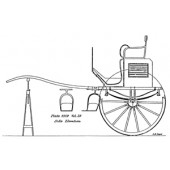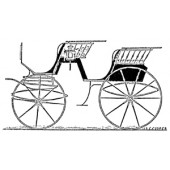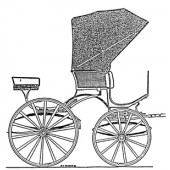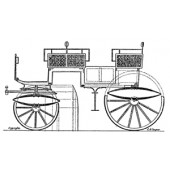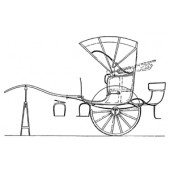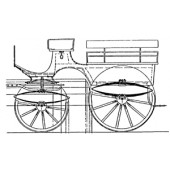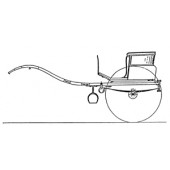You have no items in your shopping cart.
Master Carriage Builder Collection
Plan - Stanhope Gig 1/12th Scale
£4.20

This version has the traditional Stanhope body style, and is hung on a platform spring.
The addition of separate springs to the shafts isolates the body from the motion of the horse, and makes a very easy riding vehicle. Learn More
The addition of separate springs to the shafts isolates the body from the motion of the horse, and makes a very easy riding vehicle. Learn More
Plan - Siamese Phaeton 1/12th Scale
£5.50

This unusual vehicle comprises two similar bodies joined into one, and this variation with a boot added under the rear seat was introduced in 1896.
A light running carriage suitable for a 15.2 hands horse, and a most attractive subject for a model a little out of the ordinary. Learn More
A light running carriage suitable for a 15.2 hands horse, and a most attractive subject for a model a little out of the ordinary. Learn More
Plan - Spider Phaeton 1/8th Scale
£5.40

An early 19th century carriage which has been restored for the collection of the Museum of Lincolnshire Life.
The plans were prepared by the museum and portray on of the most stylish types of carriage, with folding hood,and side panels decorated with basket weave. Learn More
The plans were prepared by the museum and portray on of the most stylish types of carriage, with folding hood,and side panels decorated with basket weave. Learn More
Plan - Hearse 1/12th Scale
£7.60

The ornate decoration is well detailed on this design from a trade journal of 1901.
The Hearse has glass panels in the sides, rollers on the floor, and holders for black plumes on each corner. Learn More
The Hearse has glass panels in the sides, rollers on the floor, and holders for black plumes on each corner. Learn More
Plan - Pair Horse Char-A-Banc 1/12th Scale
£5.50

An angular outline gives a distinctive character to this very practical driving vehicle.
It is drawn with simulated basket weave panels but could be finished with plain panels for a more formal effect. Learn More
It is drawn with simulated basket weave panels but could be finished with plain panels for a more formal effect. Learn More
Plan - Deep Cab Buggy 1/12th Scale
£4.30

This unusual vehicle has a removable dickey seat, whilst the inside seat has a screw adjustment simular to that on a dog cart to retain balance.
Body contruction and hood are similar to those on a Victoria.
This carriage is suitable for a large horse. Learn More
Body contruction and hood are similar to those on a Victoria.
This carriage is suitable for a large horse. Learn More
Plan - Plain Sided Wagonette 1/12th Scale
£3.00

A fairly basic passenger vehicle, built to accomodate six inside and two with the driver.
It is fitted with shafts for a single horse, and would make a practical carriage for commercial use. Learn More
It is fitted with shafts for a single horse, and would make a practical carriage for commercial use. Learn More
Plan - Rickshaw 1/12th Scale
£3.10

A very light vehicle designed to be pulled by the "Rickshaw wallah" but offering the possibilty of adaptation for use with a goat or small pony.
This design is actually from South Africa, but originated in China. Learn More
This design is actually from South Africa, but originated in China. Learn More
Plan - Olympia Stanhope Gig 1/12th Scale
£3.00

So called because it was in fashion at the time of the International Horse Show at Olympia in 1908.
The Gig on this plan is sized for a 14.2 hands horse, but could be scaled down for a pony. Learn More
The Gig on this plan is sized for a 14.2 hands horse, but could be scaled down for a pony. Learn More
Plan - Bent Panel Gig 1/12th Scale
£5.50

When this design was published in 1891 the curved upper sides were an innovation, but this style soon become one of the most popular forms of Gig.
Suitable for a 14.2 hands cob. Learn More
Suitable for a 14.2 hands cob. Learn More





